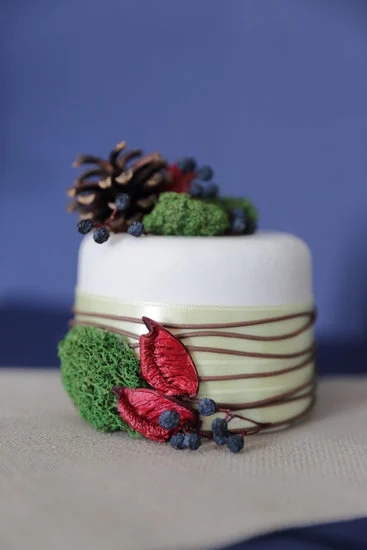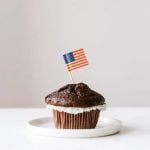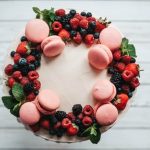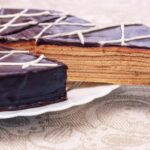Cake decorating is a fun and creative skill that allows you to transform plain cakes into stunning works of art. Whether you’re looking to impress guests at a special occasion or simply enjoy the therapeutic process of creating something beautiful, cake decorating is a hobby worth exploring.
In this article, we will guide you through step-by-step cake decorating ideas, covering everything from essential tools to advanced techniques. By the end, you’ll have the knowledge and confidence to create professional-looking cake decorations that will wow everyone.
The first step in becoming a skilled cake decorator is understanding why it’s such an enjoyable and rewarding skill to learn. Cake decorating allows you to showcase your creativity while working with delicious ingredients. From choosing a color palette to designing intricate details, every aspect of cake decorating gives you the opportunity for personal expression. Plus, who doesn’t love seeing the joy on people’s faces when they see your beautifully decorated cake?
To get started with cake decorating, it’s important to gather the essential tools that will set you up for success. From piping bags and tips to spatulas and turntables, having the right equipment is crucial for achieving professional results. In the next section of this article, we will provide a comprehensive guide on gathering these tools and explain their uses in detail.
So, if you’re ready to embark on a deliciously creative journey, keep reading our step-by-step cake decorating ideas. Whether you’re a beginner looking for basic techniques or an experienced decorator seeking new challenges, this article has something for everyone. Let’s dive into the world of cake decoration and unlock your artistic potential one slice at a time.
Gathering Essential Cake Decorating Tools
Choosing the Right Cake Decorating Tools
Before you can dive into the world of cake decorating, it’s important to gather all the essential tools and equipment that will help you achieve professional-looking results. Here are some key items that should be part of your cake decorating arsenal:
Piping Bags and Tips
Piping bags and tips are indispensable tools for creating beautiful designs on cakes. When choosing piping tips, consider the different shapes and sizes available. Some common tips include round tips for writing or outlining, star tips for creating rosettes or borders, and leaf tips for adding delicate foliage. It’s a good idea to have a variety of different tip sizes on hand to accommodate various design needs.
Spatulas and Scrapers
Spatulas and scrapers are essential for spreading icing smoothly on your cakes and achieving clean edges. Look for an offset spatula, which has a bent handle that allows for more control while working with icing. A straight spatula can also come in handy for smoothing and leveling the surface of your cake.
Turntable
A turntable is a revolving platform that makes it easier to apply icing evenly around the sides of the cake. This tool is especially useful when using buttercream or fondant because it allows you to rotate the cake instead of constantly readjusting your position.
Other Useful Tools
In addition to the basics mentioned above, there are several other tools that can make your cake decorating journey more enjoyable:
- Cake leveler: This tool helps you achieve an even surface by slicing off any domed tops from your cakes.
- Palette knife: A palette knife is ideal for transferring delicate decorations onto your cake without damaging them.
- Rolling pin: If you plan on working with fondant or gum paste, invest in a rolling pin specifically designed for these materials.
- Decorating brushes: Different sizes of decorating brushes are handy for painting on cakes or adding intricate details to your designs.
- Cake stencils: Stencils are a great way to add elegant patterns or textures to fondant-covered cakes.
By investing in these essential cake decorating tools, you’ll have everything you need to bring your creative visions to life.
Where to Buy Cake Decorating Tools
When it comes to purchasing cake decorating tools, there are several options available. Many craft and baking supply stores carry a wide range of cake decorating supplies. Additionally, you can find numerous online retailers that specialize in cake decorating equipment.
Make sure to read reviews and compare prices before making any purchases. Don’t forget to check out local garage sales or second-hand stores as well – you may be able to find some gently used tools at a fraction of the cost. With a little bit of research and shopping around, you’re bound to find the perfect tools for your cake decorating needs.
Preparing Your Cake for Decorating
Leveling and crumb coating are important steps in preparing a cake for decorating. Leveling ensures that the cake has an even surface, while crumb coating helps to seal in any loose crumbs and create a smooth base for the final icing layer. Here, we will guide you through the proper techniques for leveling and crumb coating your cake to ensure a professional-looking result.
To level your cake, start by allowing it to cool completely after baking. Once cooled, use a long serrated knife or a cake leveler to remove any domed or uneven parts of the cake. Hold the knife parallel to the countertop and gently saw back and forth, moving from one end of the cake to the other. Be sure to keep the knife level throughout this process.
After leveling your cake, you can begin the crumb coating process. Crumb coating involves applying a thin layer of icing all over the cake to catch any loose crumbs and create a smooth surface for the final icing layer. Start by placing a generous amount of icing on top of the leveled cake and using an offset spatula or a bench scraper, spread it outwards towards the edges, ensuring that the entire surface is covered.
Once you have covered the top of the cake with icing, move on to apply icing along the sides. Hold your spatula at a slight angle and apply an even layer of icing around the sides of the cake while turning it on a turntable. Use long strokes from bottom to top to create a smooth finish. As you work, be sure to scrape off any excess icing from your spatula back into your bowl.
By following these techniques for leveling and crumb coating your cake, you will create a solid foundation for further decorating. The leveled surface will make it easier to stack multiple layers evenly, while crumb coating will prevent crumbs from mixing into your final icing layer. With these steps complete, you can move on confidently to adding your decorative icing and creating a beautifully finished cake.
| Leveling and Crumb Coating | Data |
|---|---|
| Leveling Technique | Use a long serrated knife or cake leveler to remove uneven parts of the cake. |
| Crumb Coating Technique | Apply a thin layer of icing all over the cake to catch loose crumbs and create a smooth surface. |
Step-by-Step Tutorial
Basic buttercream icing techniques are essential for cake decorating beginners. Learning these techniques will provide a strong foundation for more advanced cake decorating skills. In this step-by-step tutorial, we will walk you through the basic buttercream icing techniques that will help you create beautiful and professional-looking cakes.
Before we begin, make sure you have the following essential tools:
- Offset spatula: This tool is perfect for spreading and smoothing icing on the cake.
- Piping bags: These disposable or reusable bags are used for piping icing onto the cake.
- Piping tips: There are various types of piping tips available, such as round, star, and petal tips, each creating different decorative patterns.
- Turntable: A turntable allows you to easily rotate the cake while decorating.
Now let’s get started with the tutorial:
- Prepare your cake by leveling it with a serrated knife to create an even surface.
- Apply a thin layer of buttercream icing all over the cake. This is known as crumb coating and helps to seal in any loose crumbs.
- Place the remaining buttercream icing in a piping bag fitted with your desired tip.
- Starting from the bottom of the cake, hold the piping bag at a 90-degree angle and apply even pressure to pipe a border around the base of the cake. Continue piping borders on each layer if desired.
- To create stars or rosettes, hold the piping bag perpendicular to the cake surface and apply steady pressure while rotating your wrist in a circular motion.
- For writing or intricate designs, use a smaller round tip and gently squeeze out small amounts of icing while moving your hand in a controlled manner.
Remember to practice these basic techniques before moving on to more complex designs. With time and patience, you’ll be able to create stunning cakes with buttercream icing.
| Essential Tools | Usage |
|---|---|
| Offset spatula | Spreading and smoothing icing on the cake. |
| Piping bags | Used for piping icing onto the cake. |
| Piping tips | Create different decorative patterns when piping icing. |
| Turntable | Allows you to rotate the cake while decorating. |
Fun with Fondant
Fondant, that smooth and pliable icing made from sugar and water, has become a popular choice for cake decorators due to its versatility and sleek finish. In this section, we will explore the art of working with fondant and uncover some tips and techniques to help you create flawless fondant-covered cakes.
Preparing Your Cake for Fondant
Before diving into the world of fondant covering, it is crucial to properly prepare your cake. Start by leveling your cake layers to ensure an even surface for the fondant. This can be done using a serrated knife or a cake leveler. Once leveled, apply a thin layer of buttercream or ganache on top of each layer – also known as a crumb coat – to seal in any crumbs and provide a smooth base for the fondant.
Kneading and Rolling Out Fondant
To work with fondant, it must first be kneaded until soft and pliable. Dust your work surface with powdered sugar or cornstarch to prevent sticking, then use your hands to knead the fondant until it becomes smooth. To roll out the fondant, use a rolling pin dusted with powdered sugar or cornstarch, applying gentle pressure until you have achieved the desired thickness.
Applying Fondant to Your Cake
Once you have rolled out your fondant, carefully drape it over your cake. Start by placing it in the center and gently smooth it down towards the sides using your hands or a smoothing tool. Begin at the top of the cake and work your way down, being mindful of any air bubbles that may form. If air bubbles do appear, use a sharp pin or needle to prick them, smoothing out any resulting wrinkles.
Decorating with Fondant
The beauty of working with fondant lies in its ability to be molded into intricate shapes and designs. After covering your cake, you can add embellishments such as fondant flowers, bows, or cut-out shapes. To adhere these decorations to the fondant surface, lightly brush them with water or edible glue before placing them onto the cake.
With a bit of practice and patience, you’ll soon be able to create impressive fondant-covered cakes that are sure to impress. So gather your fondant tools and let your creativity soar as you experiment with this versatile cake decorating technique.
Creating Stunning Designs with Piping Techniques
Piping techniques are an essential skill for any cake decorator looking to take their creations to the next level. With just a few basic piping tips and some practice, you can easily create stunning designs that will impress everyone. In this section, we will guide you on how to pipe intricate borders and decorations on your cakes.
To get started with piping, you’ll need a few essential tools: piping bags, couplers, and various piping tips. Piping bags come in different sizes and materials, such as disposable plastic or reusable cloth.
Couplers are used to attach the piping tip to the piping bag securely. The most common types of piping tips for borders and decorations include round tips for lines and dots, star tips for rosettes and shells, leaf tips for leaves and foliage, and petal tips for flower petals.
Once you have your tools ready, it’s time to start practicing your piping technique. Before you begin decorating your cake, it’s crucial to have a smooth base icing layer. This ensures that your piped designs will adhere properly to the cake surface. Start by preparing a batch of buttercream icing in your desired color(s) using a basic recipe. Then transfer the icing into the prepared piping bag fitted with your chosen tip.
When piping intricate borders and decorations, it’s important to have control over the pressure applied while squeezing the icing out of the bag. Gentle yet steady pressure is key here – too much pressure may cause uneven lines or squiggles, while too little pressure may result in thin lines that don’t stand out.
To create consistent borders or outlines on your cake, apply even pressure as you pipe along the edge of your cake tiers or onto parchment paper if practicing off-cake first. For more complex designs like rosettes or flowers, practice squeezing out different amounts of icing while moving in circular motions or creating small dots.
Remember that practice makes perfect when it comes to mastering intricate piping techniques. Don’t be discouraged if your first attempts aren’t flawless. As with any skill, patience and dedication will lead to improvement over time. So keep practicing, explore different piping tips, and soon you’ll be creating stunning designs that will make your cakes stand out.
Piping Tips for Borders and Decorations
- Round tips (sizes 2-6): Ideal for writing, outlining, and drawing thin lines.
- Star tips (sizes 16-22): Perfect for creating rosettes, stars, shells, and zigzag patterns.
- Leaf tips (sizes 65-74): Used for making leaves and other foliage designs.
- Petal tips (sizes 59s-125s): Great for crafting flower petals and ruffles.
Tips for Perfect Piping
- Practice consistency in applying pressure while squeezing the icing out of the bag.
- Start with simple designs before attempting more complex ones.
- Use parchment paper or practice boards to refine your technique before moving on to decorating a cake.
- Keep your hands steady by using a turntable when piping borders or intricate decorations.
- Experiment with different tip sizes, angles, and pressure levels to achieve varied effects.
By mastering piping techniques, you will be able to add elegant borders, intricate patterns, and beautiful decorations to your cakes. These skills will enable you to create stunning designs that are sure to impress friends and family at any celebration. With time and practice, you’ll become a pro at piping intricate borders and decorations that will elevate your cakes from ordinary to extraordinary.
Elevating Your Cake with Edible Art
Cake decorating is not only about frosting and piping, it can also involve creating edible art on your cakes through painting and stenciling techniques. These methods allow you to add intricate designs, patterns, and even images to your cakes, taking them to a whole new level of creativity. Whether you are a beginner or an experienced cake decorator, mastering painting and stenciling techniques can help you create stunning and unique cake decorations.
To start elevating your cake with edible art, you will need a few essential tools and materials. Here is a list of what you will need:
- Edible food colors or gel colors: These come in a wide range of colors and are specifically made for use in decorating baked goods.
- Food-safe paintbrushes: Make sure to use brushes that are designated solely for food use.
- Liquid or gel-based food pens: These can be used for adding finer details or writing on your cakes.
- Stencils: Stencils come in various designs and patterns that can provide guidance for painting or spraying onto your cake.
- Airbrushing equipment (optional): An airbrush machine allows you to spray color onto the cake evenly and with more control.
Once you have gathered your tools, it’s time to get started with the painting and stenciling techniques. Here is a step-by-step guide:
- Prepare your cake by ensuring it has been properly leveled and crumb coated as discussed in earlier sections of this article.
- If using stencils, secure them firmly onto the surface of the cake using toothpicks or non-toxic adhesive tape.
- If painting freehand, start by mixing edible food colors with a small amount of alcohol (such as vodka) or clear extract to create a paint-like consistency.
- Dip your paintbrush into the edible food color mixture and gently apply it onto the cake using light, even strokes.
- If using stencils, place a small amount of edible food color onto a sponge or brush and dab it over the stencil openings.
- Carefully remove the stencil from the cake to reveal your design.
- For more intricate designs or details, use fine-tipped food pens to draw directly onto the cake.
By following these steps and practicing your painting and stenciling techniques, you can create beautiful, personalized designs on your cakes. Experiment with different colors, patterns, and images to truly elevate your cake decoration game. Remember to take your time and be patient as learning these techniques may require some trial and error. Happy decorating.
Embellishing Your Cake with Handcrafted Fondant Figures
When it comes to cake decorating, one of the most impressive ways to add that extra touch of creativity and personalization to your creations is by embellishing them with handcrafted fondant figures. Fondant figures are like edible sculptures that can really elevate the design of your cake and bring it to life. In this section, we will provide you with easy-to-follow instructions on how to create your own handcrafted fondant figures.
To begin, gather all the necessary materials. You will need fondant in various colors, food coloring gel or liquid (if desired), a rolling pin, cornstarch or powdered sugar for dusting, a small sharp knife or fondant modeling tools, toothpicks or skewers for support if needed, and a clean surface to work on. It’s important to note that different brands of fondant may have slightly different textures and consistencies, so you may need to adjust your techniques accordingly.
Start by kneading the fondant until it becomes soft and pliable. This will make it easier to work with and shape into your desired forms. If you want different colors for your figures, divide the fondant into smaller portions and incorporate food coloring into each portion. Remember to start with small amounts of color and gradually add more until you achieve the desired shade.
Next, roll out the colored fondant on a clean surface dusted with cornstarch or powdered sugar. Use a rolling pin to flatten it evenly until it reaches your preferred thickness. Keep in mind that thicker fondant is sturdier but might be more challenging to mold intricate details.
Now comes the fun part – shaping your fondant into figures. Using your knife or fondant modeling tools, carefully cut out shapes based on what you want to create. For example, if you want to make a flower figure, cut out petals using teardrop-shaped pieces of rolled-out fondant.
To add dimension and detail, use your fingers or tools to gently press and shape the fondant. If necessary, use toothpicks or skewers as support to hold up delicate pieces or secure components together.
Remember that practice makes perfect, so don’t get discouraged if your first attempts aren’t flawless. With time and patience, you will improve your fondant figure-making skills and create impressive decorations for your cakes. So let your creativity run wild, experiment with different shapes and designs, and have fun bringing your cake to life with handcrafted fondant figures.
Tips and Tricks for Professional-Looking Cake Decorations
Achieving professional-looking cake decorations can be a challenge, but with the right tips and tricks, you can create cakes that look like they came from a bakery. One of the key elements to achieving a polished finish is mastering the art of smooth buttercream finishes and sharp edges.
To achieve a smooth buttercream finish, it’s important to start with a properly crumb coated cake. Crumb coating is the process of spreading a thin layer of buttercream over the entire cake to seal in any loose crumbs. Once your crumb coat is applied, chill the cake in the refrigerator for about 15 minutes to allow the buttercream to set.
After chilling, it’s time to apply the final layer of buttercream. Start by applying a generous amount of buttercream on the top of the cake and use an offset spatula to spread it evenly across the surface. Work your way down the sides of the cake, ensuring that you have enough frosting to cover any gaps or uneven areas. Use long strokes with your offset spatula to create a smooth and even surface.
To achieve sharp edges on your cake, use a bench scraper or icing smoother tool after applying your final layer of buttercream. Hold the scraper against the side of the cake at a slight angle and slowly rotate the turntable while applying gentle pressure. This will help remove any excess frosting and create crisp edges. Repeat this process until all sides are smooth and straight.
In addition to using tools like bench scrapers and offset spatulas, another helpful tip is to heat up your spatula or scraper for easier smoothing. Simply dip your tool in hot water, wipe off any excess water, and then use it to smooth out your buttercream. The heat will help melt any imperfections, leaving you with smoother finishes.
By following these tips and tricks for achieving smooth buttercream finishes and sharp edges on your cakes, you will be well on your way to creating professional-looking cake decorations that will impress everyone who sees them. Take your time, practice, and soon you’ll be creating stunning cakes that look as good as they taste.
Conclusion
In conclusion, cake decorating is not only a fun and creative skill to learn, but it can also be incredibly rewarding. Throughout this article, we have covered a variety of topics that will help you on your journey to becoming a master cake decorator.
From gathering essential tools to learning various techniques such as buttercream icing, fondant covering, piping, painting and stenciling, as well as creating handcrafted fondant figures, we have provided step-by-step instructions and tips to help you create stunning cake designs.
By following the techniques outlined in this article and practicing regularly, you will be able to achieve professional-looking cake decorations with smooth buttercream finishes and sharp edges. Remember that practice makes perfect, so don’t be discouraged if your first attempts don’t turn out exactly as you imagined. Keep experimenting, trying new techniques, and refining your skills.
With each successful creation, remember to celebrate your accomplishments. Share your stunning creations with family and friends and watch as they are impressed by your newfound talent. Don’t hesitate to challenge yourself by taking on more complex designs or incorporating new trends in cake decorating. The possibilities are endless when it comes to creating unique and beautiful cakes.
Frequently Asked Questions
What are the steps to decorate a cake?
The steps to decorate a cake involve several key stages. Firstly, you need to prepare the cake by ensuring it is well-cooled and levelled. Next, apply a crumb coat by spreading a thin layer of frosting all over the cake to seal in any loose crumbs. Once the crumb coat has set, you can add the final layer of frosting using an offset spatula or piping bag.
This is where you can get creative with designs and textures. After frosting the cake, consider adding decorations such as sprinkles, edible flowers, or fondant shapes. Finally, it’s important to step back and evaluate your work before serving or transporting the cake to ensure it looks visually pleasing.
What is the easiest way to decorate a cake?
The easiest way to decorate a cake for beginners is by using simple techniques that require minimal tools and expertise. One straightforward approach is to dust powdered sugar or cocoa powder over the top of the frosted cake using a fine mesh sieve, creating an elegant and effortless look.
Another easy technique involves drizzling melted chocolate or caramel sauce on top of the cake for a more rustic touch. Alternatively, using edible flowers or fresh fruits as toppings requires minimal effort while adding natural beauty and flavor.
What does a beginner need for cake decorating?
For a beginner in cake decorating, there are a few essential tools and supplies that are helpful to have on hand. To begin with, invest in basic kitchen equipment such as mixing bowls, measuring cups and spoons, spatulas (both straight and offset), an electric mixer for making frostings or batters if desired, and at least two round baking pans for cakes. Additionally, an assortment of piping tips can be useful for creating different patterns with frosting – start with a small set including star tips, round tips, and leaf tips.
A turntable provides convenience when applying frosting evenly around the sides of a cake while rotating it smoothly during decorating. Lastly, different types of food coloring gels allow beginners to add vibrant hues without altering the consistency of their frostings, making it easier to achieve desired colors while decorating.

Welcome to our cake decorating blog! My name is Destiny Flores, and I am the proud owner of a cake decorating business named Cake Karma. Our mission is to provide delicious, beautiful cakes for all occasions. We specialize in creating custom cakes that are tailored specifically to each customer’s individual needs and tastes.





